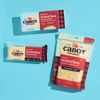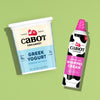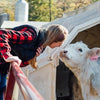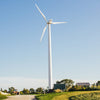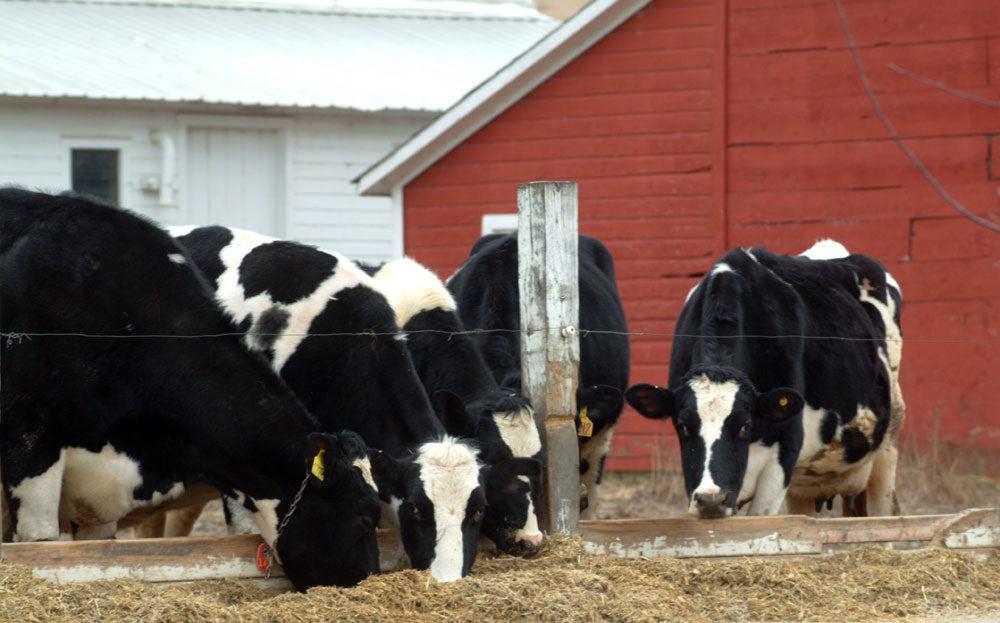
Robotic Milking 101
Cabot farms are more than just home to the cows who produce the fresh, creamy milk that makes our award-winning dairy products. They’re also home to cutting edge technology that’s revolutionizing cow comfort, improving farm efficiency, and moving farming forward.

Robotic Milking may sound like something out of a science-fiction movie, but in truth, it’s already been around for several years, and represents the bold spirit of innovation that our farmers have embraced for over a century. Robotic milking is great for farms because it gives cows full control over when and how often they get milked, which gives farmers more time to focus on caring for their herd. Additionally, it ensures that chores & schedules are more flexible – allowing farmers more time to plant, harvest crops, or attend their kids sports games!
Here’s how it works:
Step 1:
When they’re ready, cows voluntarily enter the milking stall. A sensor reads a chip usually located on a collar around each cow’s neck and either begins prepping the cow for milking—or releases her if she’s been milked too recently and needs to wait until later.

Cows at Foster Brother’s Farm eagerly awaiting their turn
Step 2:
Grain is dispensed for the cow to nibble on, based on her specific nutritional needs. A cow producing more milk will be provided with more grain to match her individual caloric needs. Simultaneously, a robotic arm brushes and disinfects the cow’s teats and attaches the inflations. The robotic milker collects 3-5 gallons per visit, stopping and detaching automatically when milking is finished.

The cow’s teat is getting cleaned prior to milking

After the teat is cleaned with cleaning solution, a robotic arm attaches the milking machine
Step 3:
After all 4 quarters are finished milking, her teats are sprayed with an iodine solution to help seal the teat ends and the cow is released to roam the barn, visit the feed bunk, get her back scratched or socialize with her friends while the next cow enters.
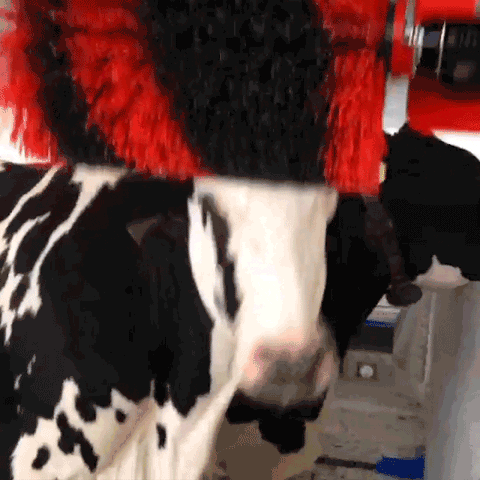
The ladies love getting a nice scratch in the barn
From start to finish, the whole process takes around 7 minutes. When you consider that cows usually get milked 2-3 times per day, this means that they spend no more than 21 minutes in an entire day being milked. This incredible efficiency allows cows to rest and socialize more with other cows, and lets farmers focus even more on improving the lives of their herd and their family.

Cows at Foster Brother’s Farm relaxing in the free stall barn.
The robotic system also keeps detailed records on each cow’s milk production including total milk yield, time spent in robot, milk temperature, butterfat and protein levels, number of visits to the robotic milker and much more. The farmers can use all of this information to tend to the cows whose production may be low or inconsistent.

Robotic Milking is already thriving on a number of Cabot farms, many of whom were the first in their states to adopt this exciting technology. Let’s meet some of them!
The Duffy Family, owners of Great Brook Farm in Carlisle, Massachusetts, installed their robotic system in 2011, becoming the first in their state to do so. Great Brook Farm is also located on a state park and welcomes over 100,000 visitors every year.

Tamma & Mark Duffy

Mark giving tours to local students.
Foster Brothers Farm in Middlebury, Vermont, installed their robotic milking system in 2018, and was named 2019 Innovative Dairy Farmer of the Year. As home to one of the first “cow power” anaerobic digesters in the state, it’s easy to see why the Fosters’ efforts to create renewable energy and be more sustainable are celebrated.

The Foster Family

Technology on the Freund Farm
Other Cabot farms who have invested in robotic milking include Kenyon Hill Farm from Cambridge, NY, Barstow’s Longview Farm in Hadley, Massachusetts, UConn Department of Animal Science, Hastings Farm in Suffield CT, Sweet Pea Farm in North Ganby CT, and Echo Farm Puddings in Hinsdale NH.

With so many exciting benefits, it’s easy to see why farmers and cows alike are excited about robotic milking. After all, the more rich milk Cabot farms produce, the more rich Cabot cheddar we can put on your table. And perhaps we’re a little biased, but we think you can never go wrong with more cheddar.



